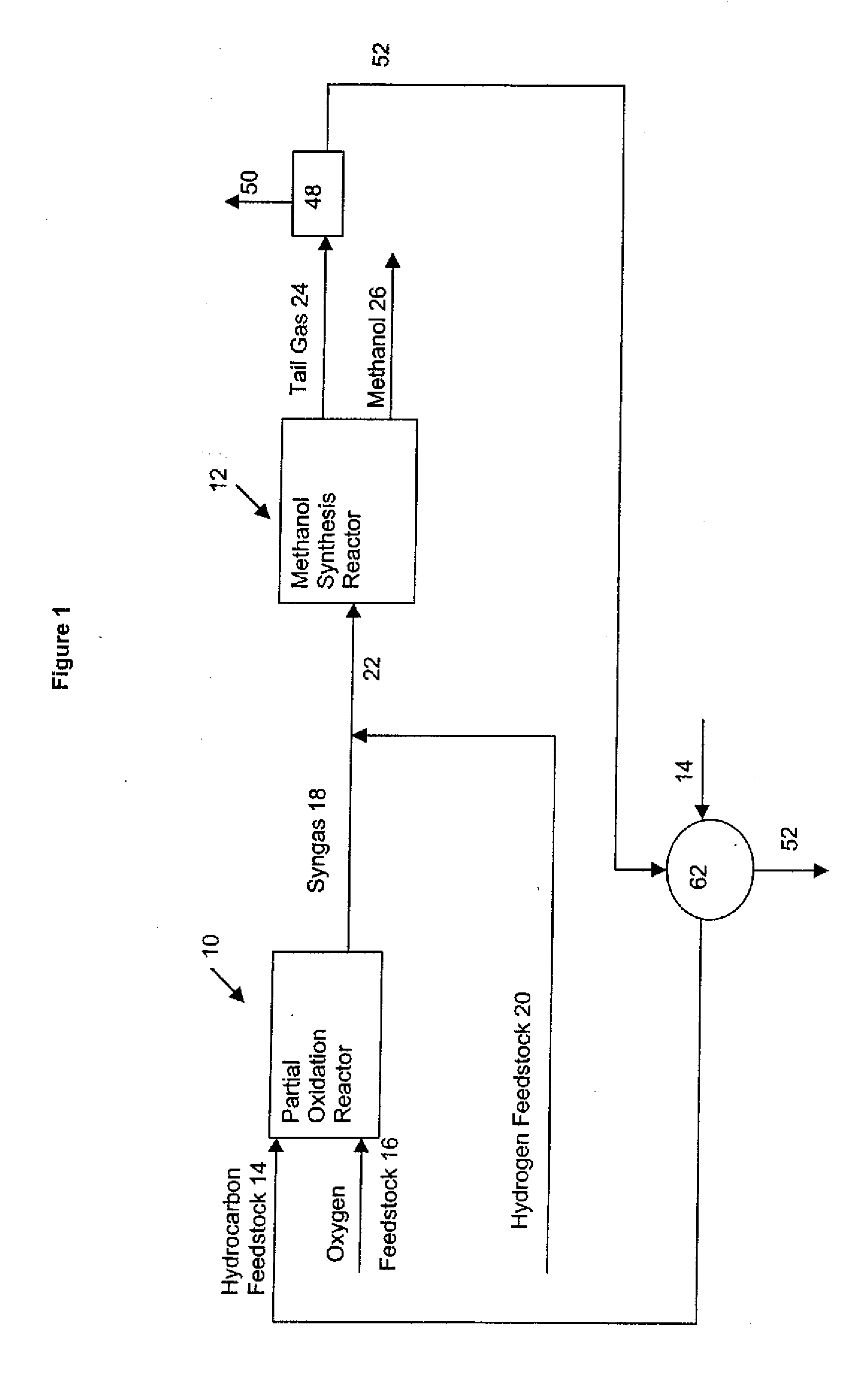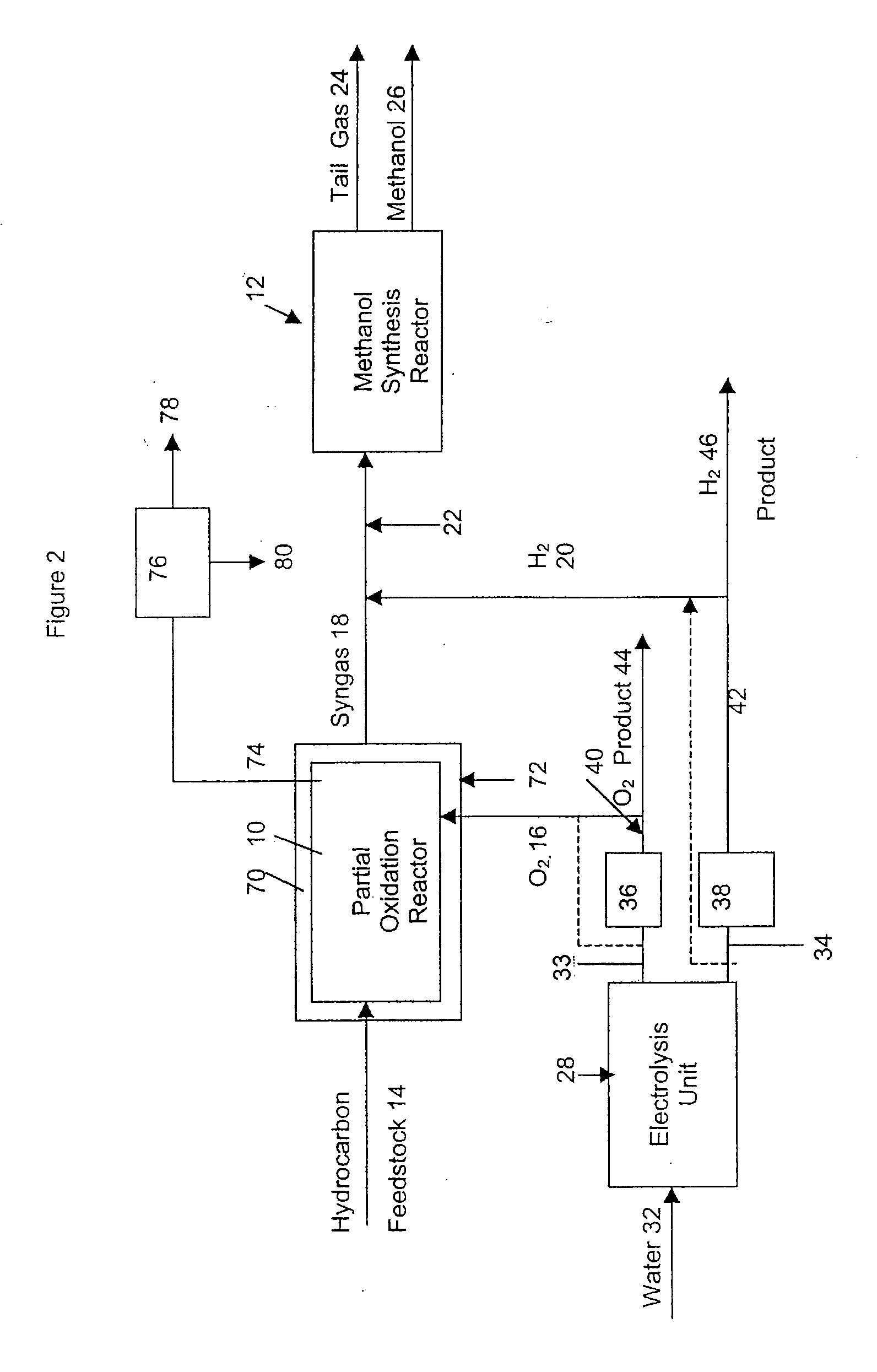Methanol production process
a methanol production and process technology, applied in the field of methanol production, can solve the problems of increasing the size of process equipment, consuming up to 650 pounds of co2 /sub>per ton of methanol produced, and introducing substantial quantities of nitrogen, so as to reduce the power demand from the grid, reduce the rate, and improve the efficiency of the operation of power generating plants
- Summary
- Abstract
- Description
- Claims
- Application Information
AI Technical Summary
Benefits of technology
Problems solved by technology
Method used
Image
Examples
Embodiment Construction
[0075]As shown in FIG. 1, according to a preferred embodiment of the instant invention, the process comprises partial oxidation reactor 10 and methanol synthesis reactor 12. Hydrocarbon feedstock 14 and oxygen feedstock 16 are fed to partial oxidation reactor 10 to produce synthesis gas 18. Hydrogen feedstock 20 is combined with synthesis gas 18 to produce synthesis gas 22 wherein the stoichiometric balance has been adjusted. The adjusted synthesis gas 22 is fed to methanol synthesis reactor 12 to produce tail gas 24 and methanol 26.
[0076]In steam reformation processes, steam is added to a reformer. Further, the hydrocarbon feedstock fed to the stream reformer may be humidified (which provides a further source of water). Overall, the process gas streams contain substantial quantities of water and the methanol produced typically is treated such as by distillation to reduce the water content of the methanol. In accordance with one embodiment of the instant process a hydrogen gas strea...
PUM
| Property | Measurement | Unit |
|---|---|---|
| Weight | aaaaa | aaaaa |
| Ratio | aaaaa | aaaaa |
| Mole fraction | aaaaa | aaaaa |
Abstract
Description
Claims
Application Information
 Login to View More
Login to View More - R&D
- Intellectual Property
- Life Sciences
- Materials
- Tech Scout
- Unparalleled Data Quality
- Higher Quality Content
- 60% Fewer Hallucinations
Browse by: Latest US Patents, China's latest patents, Technical Efficacy Thesaurus, Application Domain, Technology Topic, Popular Technical Reports.
© 2025 PatSnap. All rights reserved.Legal|Privacy policy|Modern Slavery Act Transparency Statement|Sitemap|About US| Contact US: help@patsnap.com



